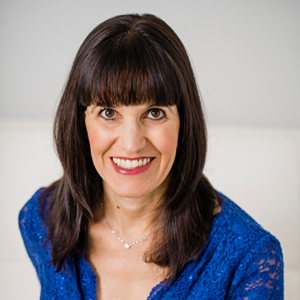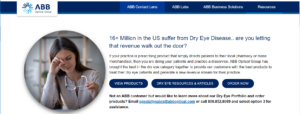

Melissa Barnett, OD, FAAO, FSLS, FBCLA, principal optometrist at the University of California, Davis Eye Center in Sacramento and Davis, California, and an internationally recognized speaker specializing in dry eye disease and specialty contact lenses, agrees and notes that the COVID-19 pandemic has brought forth a new condition: mask-associated dry eye. “We are on digital devices more than ever before, and eye care professionals are seeing more dry eye patients than ever before.”
Whatever reasons contribute to dry eye – and there are many – it’s important that eye care professionals (ECPs) encourage their staff members to help identify these patients and then leverage the tools, technology and products they have to help the condition.
Break a negative cycle
Not only is dry eye uncomfortable for patients, it can also start a negative cycle for an eye care professional’s practice. Contact lens patients who experience dryness-related symptoms may stop wearing their contact lenses, costing a practice revenue from product sales and professional services.
Dr. Barnett says that preventing contact lens dropouts due to dryness complaints is a boon to practice and patient alike. Plus, ABB Optical Group members can access a variety of beneficial products to help their patients find relief for dry eye symptoms. ABB also offers educational opportunities for ECPs looking to learn more about and specialize in dry eye care.
Even patients who state that they do not have any complaints should be assessed for dry eye signs and symptoms, she says. “Whether patients wear soft, corneal gas permeable, hybrid or scleral contact lenses, it is important to ensure that the lenses are fitting well. When fitting contact lenses, we don’t want to compromise a patient’s ocular surface, which could instigate infectious or inflammatory reactions,” she says. “ECPs can help to manage the ocular surface for the most successful contact lens wear.”
The first step, in addition to using a questionnaire to identify potential issues, is to examine the eyelids and lashes to evaluate for Meibomian gland dysfunction, blepharitis, and collarettes which are present in Demodex blepharitis. Dr. Barnett recommends to evaluate the patient with the eyelids closed to evaluate for lagophthalmous and incomplete eyelid closure.
Corneal and conjunctival staining, tear osmolarity, tear meniscus height and determining tear breakup time are useful prior to fitting contact lenses. “It is pertinent to evaluate the ocular surface prior to contact lens fitting. It is essential to remove the contact lenses on follow-up visits to examine the ocular surface,” she says. Even if a contact lens appears to be fitting well, it is not sufficient to evaluate the contact lens on the eye, even if the patient is reporting good vision and comfort. “A patient can have moderate to severe dry eye with massive corneal and conjunctival staining and be asymptomatic,” she says. “My goal is to provide good vision and long-lasting contact lens comfort.”
Plus, with mask-associated dry eye and strain from digital devices becoming more common, it is important to discuss this multifactorial disease with patients.
IDENTIFY IT EARLY
Dry eye can become an urgent issue that impacts vision. “It’s better to detect it early and manage the condition, especially as dry eye can be exacerbated with systemic diseases,” says Dr. Barnett. Most importantly, it’s key to start right away. Each day, week or month that a dry eye sufferer tries self-treating the condition is frustrating for the patient. It’s also expensive for patients to try products that don’t work.
Managing dry eye starts with identifying it early. “Ask contact lens wearers how their contacts feel in the morning and in the evening,” advises Dr. Barnett. There are a multitude of products that can help them.
- Lid cleaners, such as the VibrantVue® lid and lash care system, which includes a gel and spray, both with hypochlorous solution, can be used to help with Meibomian gland dysfunction. Incorporating a warm compress such as Eyeleve™ by Bruder into the daily care routine can help the ocular surface, adds Dr. Barnett.
- Compresses can help ease discomfort. Dr. Barnett noted a study where the Eyeleve™ compress used once a day for 10 minutes improved contact lens wearers’ wearing time for up to three hours. “Improving Meibomian gland function helps stabilize the tear film, thus reducing tear evaporation. I share this study with my patients to show it has resulted in a quantifiable improvement.”
- Recommend a sterile saline solution like Vibrant Vue® Scleral Saline, which is preservative-free and travel-friendly, packaged in 100 single-use vials, says Dr. Barnett.
- Maintain stellar hand hygiene.
References
- .Nelson D, Craig JP, Esen K, et all. TFOS DEWS II Introduction. The Ocular Surface. 2017; 269-75.




